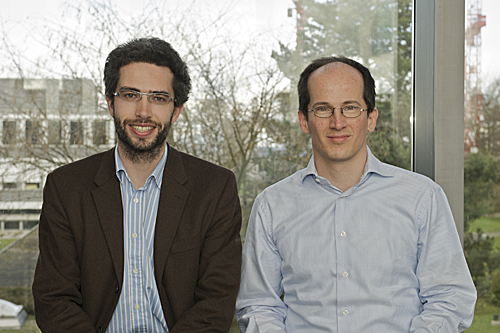John Morton
Materials Dept. & Clarendon Laboratory, Oxford University, UK

Date
31 March 2010
Host
Andreas Wallraff
Title
A quantum Memory Lasting Seconds in Silicon
Abstract
The transfer of information between different physical forms is a central theme in communication and computation, for example between processing entities and memory. Nowhere is this more crucial than in quantum computation, where great effort must be taken to protect the integrity of a fragile quantum bit. Nuclear spins are known to benefit from long coherence times compared to electron pins, but are slow to manipulate and suffer from weak thermal polarisation. A powerful model for quantum computation is thus one in which electron spins are used for processing and readout while nuclear spins are used for storage. Here we demonstrate the coherent transfer of a superposition state in an electron spin processing qubit to a nuclear spin memory qubit, using a combination of microwave and radiofrequency pulses applied to 31P donors in an isotopically pure 28Si crystal. We have achieved store-recover fidelities of 90%, which we attribute to systematic imperfections in radiofrequency pulses which can be improved through the use of composite pulses. The coherence lifetime of the quantum memory element is studied as a function of donor concentration and temperature, and is found to exceed two seconds at 5.5K.
